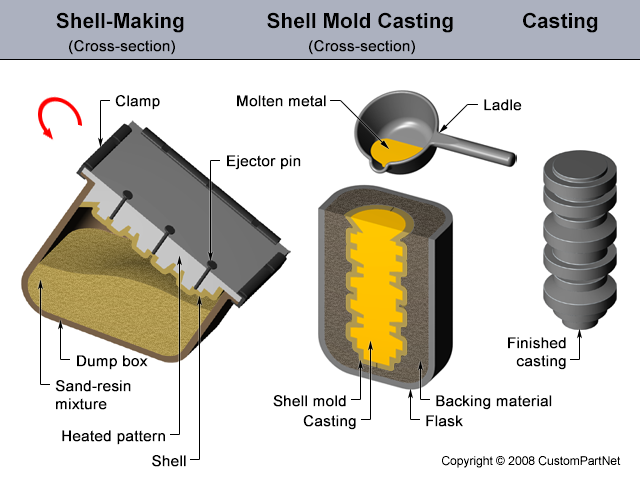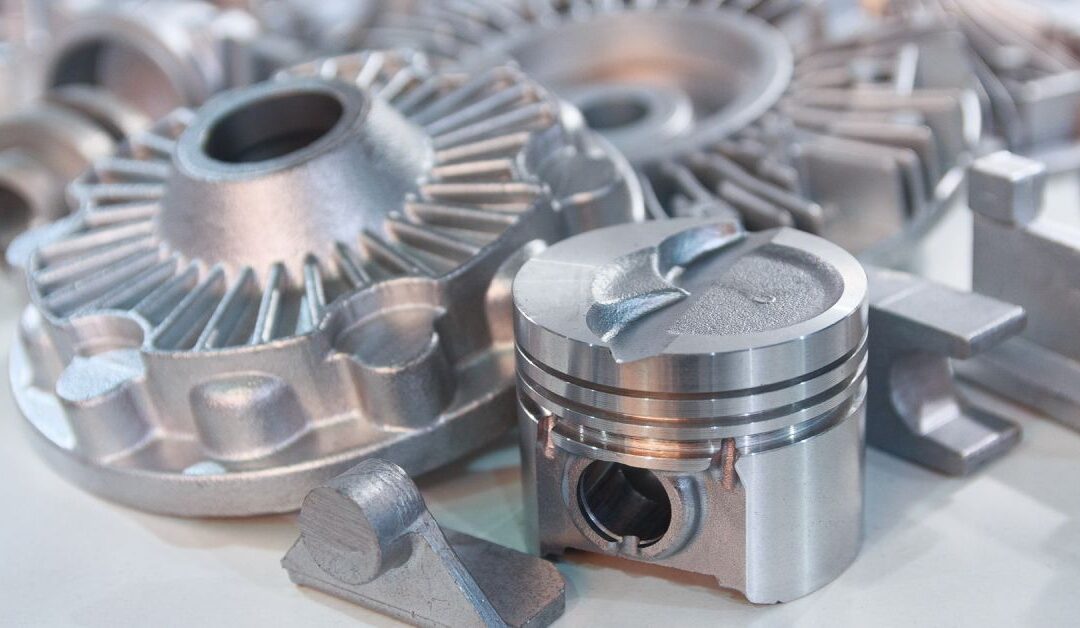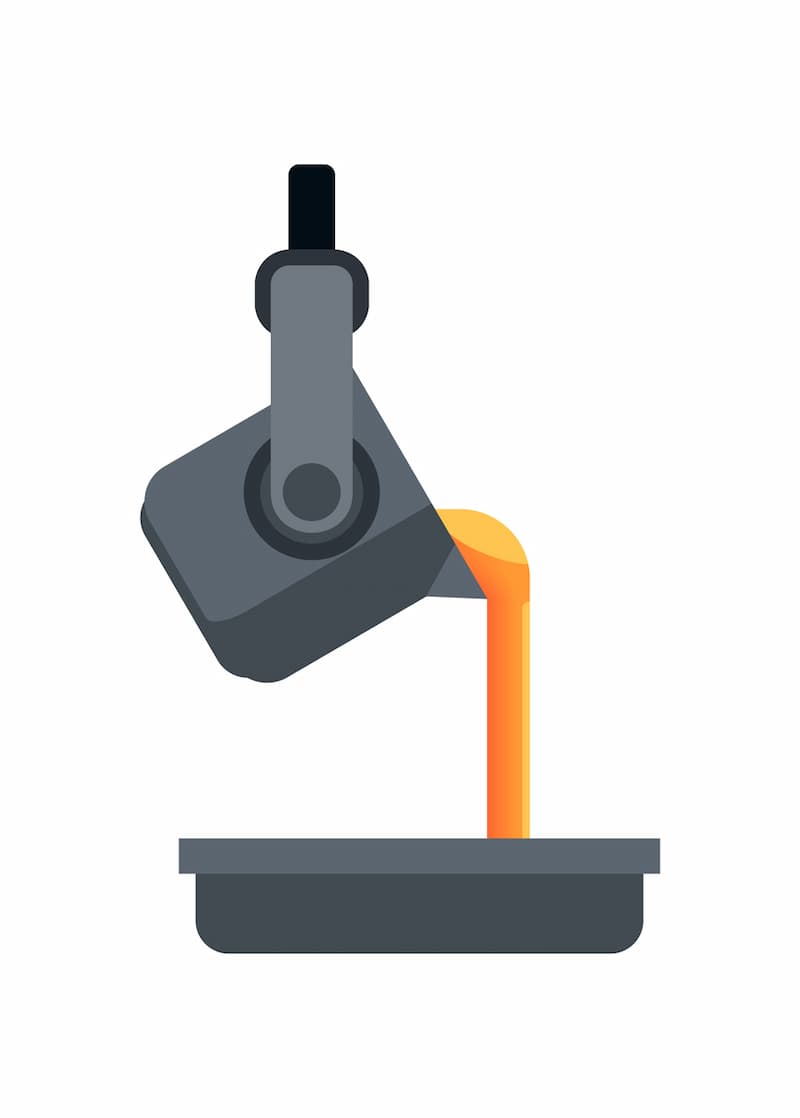Recognizing the Metal Castings Refine: A Comprehensive Overview for Beginners
The Metal Casting procedure is a basic technique in producing that changes molten metal into solid types. Beginners need to realize the various methods included, such as sand spreading and die casting. Comprehending the products, layout principles, and precaution is just as essential. Each element plays a vital function in attaining effective results. As one browses these ins and outs, the question of just how to enhance each action for enhanced outcomes becomes increasingly essential.
The Basics of Steel Casting
Although Metal Casting has actually advanced over centuries, its fundamental principles stay important and regular to the manufacturing procedure. At its core, Metal Casting entails the improvement of liquified metal into strong items via different strategies. The procedure begins with the production of a mold and mildew, which defines the shape of the final item. As soon as the mold is prepared, metal is heated up to its melting point and put right into the cavity. After cooling down, the steel solidifies, taking the form of the mold and mildew.
There are numerous casting methods, consisting of sand spreading, financial investment casting, and die casting, each with unique advantages and applications. The option of strategy depends on variables such as production volume, material type, and wanted precision. Once cast, the end product might undergo added procedures like machining or surface area therapy to achieve the called for finish and specs. Recognizing these essentials is vital for anybody interested in the area of Metal Casting.

Understanding Materials Utilized in Metal Casting
Products play a necessary function in the Metal Casting procedure, influencing the final product's residential properties and efficiency. Different metals are utilized, including light weight aluminum, bronze, iron, and steel, each offering distinct qualities suited for particular applications. Light weight aluminum is corrosion-resistant and light-weight, making it ideal for vehicle parts. Iron, especially cast iron, is favored for its superb wear resistance and sturdiness. Steel provides high stamina and flexibility, commonly used in heavy machinery components. Bronze, understood for its rust resistance and machinability, is typically utilized in aquatic applications.
Along with the metals, different casting products, such as sand, plaster, and ceramic, are made use of to create molds. Sand spreading, one of the most common technique, utilizes silica sand because of its thermal stability and capability to create detailed forms. Plaster and ceramic mold and mildews offer finer details however may require even more intricate procedures. The option of materials straight influences the efficiency, expense, and high quality of the casting procedure.
The Layout Process: From Idea to Blueprint
The design process in Metal Casting starts with the preliminary concept development, where concepts are created and evaluated. This is adhered to by the application of CAD modeling strategies, permitting specific visualizations of the style. Lastly, the blueprint completion actions assure that all specifications are accurately documented for manufacturing.
Preliminary Concept Development
First idea development notes an important stage in the Metal Casting process, where ideas change into tangible designs. During this stage, developers team up with designers and stakeholders to brainstorm and improve first ideas. They consider aspects such as performance, appearances, and manufacturability, making sure that the design fulfills the needed specifications and performance criteria. Sketches and outlines are produced to imagine the ideas, allowing for initial evaluations of feasibility and cost-effectiveness. This stage additionally involves determining products and prospective spreading methods that straighten with the layout objectives. Ultimately, initial principle growth prepares for an extensive blueprint, guiding the subsequent stages of the casting process and making certain an effective shift from concept to truth.
CAD Modeling Techniques
Transforming principles into accurate styles, CAD modeling methods play an essential function in the Metal Casting process. These techniques use sophisticated software application to produce in-depth three-dimensional versions that accurately mirror the intended product. By using devices such as parametric modeling, solid modeling, and surface area modeling, designers can control measurements and forms effortlessly. CAD systems also assist in simulation and evaluation, enabling image source the identification of potential flaws before production starts. This aggressive technique reduces product waste and maximizes the layout for manufacturability. Additionally, CAD models can be conveniently customized, allowing fast models based upon responses. Essentially, CAD modeling functions as the backbone of the design process, bridging the gap in between initial principles and the ultimate production-ready styles.
Blueprint Completion Tips
Complying with the production of thorough CAD models, the following phase includes plan completion, which is essential in equating digital layouts right into workable prepare for production. This procedure begins with examining the CAD designs for accuracy and conformity with specifications. When confirmed, the measurements, resistances, and material specs are thoroughly outlined to assure clearness. Incorporating annotations and notes helps communicate essential information concerning spreading procedures, surface finishes, and setting up demands. The settled plan goes through a rigorous authorization process, frequently involving collaboration with designers and production groups to attend to any potential concerns. Modifications are made and authorizations acquired, the blueprint is formally launched, offering as the foundational document for the succeeding phases of Metal Casting, including pattern production and mold layout.
The Metal Casting Methods Clarified

Metal Casting strategies include a selection of techniques used to form liquified steel into preferred types. These methods vary according to the kind of material, complexity of the style, and manufacturing quantity. Sand spreading is just one of one of the most usual approaches, involving the creation of a mold and mildew from sand to hold the liquified steel. Investment spreading, or lost-wax casting, permits complex styles by utilizing a wax pattern that is dissolved. Pass away casting utilizes high-pressure injection of liquified steel into a mold, appropriate for mass production. Other approaches consist of long-term mold and mildew casting, which uses multiple-use mold and mildews, and centrifugal spreading, where rotational pressures aid in filling up the mold. Each strategy has its advantages and applications, making it vital for suppliers to select the proper approach based upon their specific requirements and requirements. Recognizing these techniques is necessary for any person included in the Metal Casting process.
Finishing Procedures: Enhancing Your Casted Product

Ending up procedures play a necessary duty in improving the quality and look of casted products. Various surface therapy methods, such as polishing and covering, are utilized to boost durability and aesthetic appeals. Additionally, quality inspection methods guarantee that the end product meets specified standards and efficiency requirements.
Surface Area Treatment Methods
A variety of surface therapy strategies play an essential duty in boosting the top quality and durability of casted products. These techniques include approaches such as shot blasting, polishing, and covering. Shot blowing up effectively gets rid of surface area blemishes, boosting the visual and practical characteristics of the spreading. Sprucing up supplies a smooth surface, which is specifically important for decorative applications and parts needing very little friction. Finishing techniques, such as electroplating or powder coating, offer added defense against rust and wear, making certain resilience. Surface therapies can enhance adhesion for subsequent processes, such as painting or bonding. By utilizing these approaches, manufacturers can accomplish remarkable surface area top quality, which is important for the efficiency and lifespan of Metal Casting in numerous applications.
Top Quality Examination Techniques
Reliable quality inspection methods are important for ensuring the honesty and performance of casted items after the finishing processes. Numerous techniques are utilized to assess the high quality of Metal Casting, consisting of aesthetic evaluation, dimensional checks, and non-destructive testing (NDT) Aesthetic inspection enables the recognition of surface area problems, while dimensional checks assure that products satisfy defined resistances. NDT methods, such as ultrasonic testing and radiographic inspection, provide deeper understandings right into internal integrity without damaging the spreadings. Additionally, go to this website mechanical testing, such as tensile and firmness examinations, examines material homes - Wisconsin Aluminum Foundry. By employing a mix of these techniques, producers can boost product high quality and dependability, inevitably resulting in greater client contentment and decreased production costs
Safety And Security Considerations in Metal Casting
While the Metal Casting process supplies many benefits, it additionally presents a variety of safety and security dangers that must be carefully handled. Workers in casting facilities are subjected to heats, liquified metals, and unsafe materials, which can lead to serious injuries if appropriate preventative measures are not taken. Individual safety tools (PPE) such as heat-resistant gloves, face shields, and safety clothes is crucial to lessen risks.
Additionally, the visibility of fumes and dust necessitates appropriate ventilation systems to ensure air high quality - Wisconsin Aluminum Foundry. Normal training on safety and security protocols is crucial for all employees to recognize potential threats and respond properly. Emergency situation procedures should be established, consisting of fire precaution and emergency treatment availability. Maintenance of tools and proper handling of materials additionally add to a much safer working setting. By prioritizing these safety and security considerations, Metal Casting procedures can secure their workforce and maintain reliable production procedures
Often Asked Questions
What Are the Ecological Influences of Metal Casting?
Metal Casting can bring about ecological effects such as air and water contamination, resource exhaustion, and energy intake. In addition, incorrect waste monitoring and discharges from shops add to environmental disturbances and wellness dangers for neighboring communities.
Exactly how Do I Choose the Right Metal for Spreading?
To pick the ideal metal for casting, one must consider aspects such as mechanical homes, deterioration resistance, thermal conductivity, and price. Evaluating the desired application and environmental problems is vital for suitable option.
What Are the Typical Flaws in Metal Casting?
Typical issues in Metal Casting include porosity, shrinkage, sand addition, and misruns. These problems often arise from incorrect product option, poor layout, or problems in the casting process, impacting the end product's top quality and performance.
Exactly How Can I Boost My Steel Casting Abilities?
To boost Metal Casting abilities, one should exercise consistently, research study spreading techniques, analyze previous projects for defects, look for comments from knowledgeable casters, and constantly trying out different materials and methods to enhance effectiveness and understanding.
What Is the Cost of Starting a Steel Casting Organization?
Starting a steel spreading organization generally calls for a preliminary click to read financial investment of $5,000 to $50,000, depending upon equipment, materials, and center costs. Elements like location and scale can considerably influence total startup expenditures.
The Metal Casting process is an essential strategy in making that transforms molten metal into strong kinds. Novices must realize the numerous approaches involved, such as sand casting and pass away spreading. There are several casting techniques, consisting of sand spreading, investment spreading, and pass away spreading, each with unique benefits and applications. Financial investment spreading, or lost-wax casting, permits for detailed layouts by using a wax pattern that is melted away. Other approaches include permanent mold casting, which utilizes multiple-use mold and mildews, and centrifugal casting, where rotational forces assist in loading the mold and mildew.